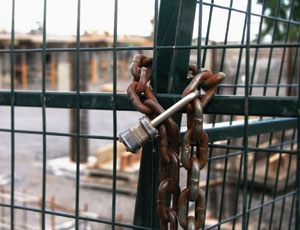“Grim.” “Dire.” “Hairy.”The words construction industry veterans are using to describe the state of project financing show how far the market has fallen since the 2008 economic crash. But while the lean times aren’t over, the market mood appears to be changing from shell-shocked in trenches to a cautious look outward for opportunity.

“It is pretty dire out there, with up to 15 to 20% of construction loans in default,” says David Pfeffer, an attorney and co-chair of the construction practice group at New York’s Tarter Krinsky & Drogin. “But I have been seeing a little light at the end of the tunnel. We still may be a year or two before the rebound, especially in the residential market.”
For now, opportunities focus on existing projects, says Jacob Sacks, co-principal of Cayuga Capital Management, a residential developer active in Brooklyn and Manhattan. “The market for sourcing new development loans today – I would use the word ‘grim,’” he adds.
But today’s prolonged capital freeze is more about fear than credit availability, says Ken Martinek, president and CEO at Northeast Community Bank of White Plains, N.Y. “It’s pretty hairy out there,” he adds. “The overall market has been terrible, but the other factor is that no bankers in their right minds want to run afoul of their safety and soundness regulators.”
For now, capital sits on the sidelines, says Christophe Terlizzi, principal at Laurier Capital Advisors, a financing consultant in Bryn Mawr, Pa. “I don’t think there is a shortage, but the capital that is available is smart and very cautious,” he says.
Indeed, banks are seeking the right mix of projects and borrowers, says Rick Gavin, partner at Grassi & Co., an accountant in Jericho, N.Y. “The banks still have people who have goals of making deals,” he says.
Harsh AdjustmentsProject financing was under strain before 2008, but the problem wasn’t lending capacity. Indeed, developers were flush with capital as banks – including newcomers chasing a hot real estate market – actively sought deals, particularly for residential and office projects across the New York region.
The concern at that time was instead how the cost of construction materials had been climbing rapidly, putting project budget assumptions into question, and making some lenders nervous. Those problems seem quaint now. What had been cracks in the foundation were forgotten when the walls simply gave way as the economy crashed.
Today, credit requirements are unrecognizable in their strictness, says Pfeffer, who represents owners and developers. It’s a big factor in hundreds of stalled projects across New York City alone. “It was almost impossible to get funding last year,” he adds.
The scenario has left owners focused on the few projects left in their pipelines, says Cayuga’s Sacks. His firm completed two in Brooklyn last year – a 15-unit condominium project at 38 Wilson Ave. and a 42-unit rental with retail at 44 Berry St. – and has a 32-unit rental building nearing completion at 184 Noll St. But Cayuga has no new speculative projects ready.


Post a comment to this article
Report Abusive Comment